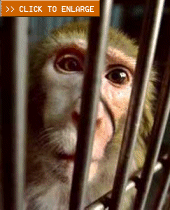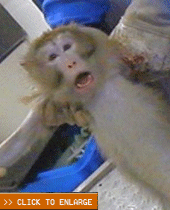Breaking News - March 1, 2016
New direction urged to improve cancer nanotechnologyThe complex microenvironment of tumors is presenting a challenge in developing effective anticancer treatments that attempt to harness nanotechnology. Researchers are recommending pivotal changes in the field of cancer nanotechnology because experiments with laboratory animals and efforts based on current assumptions about drug delivery have largely failed to translate into successful clinical results. (Purdue University image/Bumsoo Han, Kinam Park, Murray Korc)
Cancer has become our modern day plague, killing 500,000+ Americans each year. Virtually every American has had some experience with cancer, either personally or through someone they know. Our country’s war on cancer officially began in 1971, allocating billions of tax dollars to research, and here we are more than thirty years later, with cancer diagnoses and death rates escalating. What’s wrong with this picture? Simply put, the billions of dollars invested in cancer research have been primarily used for animal experimentation, a method that is incapable of effectively treating or curing cancer, or any other disease, in humans.
According to Dr. Richard Klausner of the National Cancer Institute, "The history of cancer research has been a history of curing cancer in the mouse. We have cured mice of cancer for decades, and it simply didn't work in humans."
Animals in cancer laboratories suffer immensely through duplicative, painful procedures. Millions of dogs, rats, mice, rabbits, guinea pigs, cats and other animals have undergone agonizing experiments and deaths, leaving behind no legitimate information to aid us in our fight against cancer. Yet the cycle continues: Our country pours money into animal-based experiments, with no viable outcome ever achieved.
Mice in particular are used in cancer research, despite their many differences from humans. Vivisectors’ preference for mice and other rodents is based not on scientific principles, but on the fact that they are cheap and easy to handle. As rodents are not included in the federal Animal Welfare Act (AWA), researchers do not need to follow any guidelines whatsoever when experimenting on them, be it providing drinking water or documenting procedures. This makes it impossible to know how many have been tested on and killed. Sadly, humans generally feel little compassion for mice and other rodents, perhaps because we are so different, yet they undeniably feel pain and fear, making their presence in experiments just as immoral as the use of any living being.
RESEARCH—DOOMED FROM THE START
Most cancer experiments on animals consist of either chemically inducing cancer or assessing a chemical’s potential fortreating cancer. This methodology has been the norm for decades, even though it still hasn’t accurately predicted human reactions to chemicals. In both instances, the animals are exposed to enormous amounts of the test chemicals, much more so than any human would reasonably be exposed to. By further widening the gaps between species and circumstance, these invalid experiments are doomed from the start.
Inducing Cancer in Animals
In the maximum tolerated dose (MTD) test to induce cancer, animals are exposed to a test chemical in huge quantities, given as much as they can tolerate without dying. Their suffering is unremitting in these experiments, as many are literally poisoned to death, and the ones kept alive are chronically wounded and in immense pain, on the verge of dying. The MTD test ignores the differences between the animals’ full immersion and immediate cancer, and the slower, irregular development of human cancers. This test does not imitate how humans get cancer. Since the starting point of this test is inaccurate, any results obtained are also inaccurate, making this test invalid and wasteful.
Click here to learn more about cancer experiments on animals.
Researchers test potential cancer treatments on animals, refuting the evidence that animal data cannot be accurately applied to humans. Many drugs kill tumors in animals without harming the animal; once released to the public, humans either are unaffected by the drug, or harmed by it.
Click here to learn why cancer research on animals is a failure.
DANGERS IN GENERALIZING FROM ANIMAL TO HUMAN
Absurdly, researchers rely on animal data over human data. The animal-model approach is practiced even when the chemical is already known to cause cancer in humans, wasting tax dollars and precious time while people continue to get cancer from that carcinogen. When a chemical is found to cause cancer in humans, scientists run to their labs to duplicate this in animals. Usually, the cause and effect relationship is not observed in the animals, and the researchers conclude that the chemical is safe. This foolish system has kept carcinogenic substances available to humans, providing us with a false sense of security and our continued use of toxic substances.
Click here to learn how researchers' reliance on animals has injured and killed humans.
REPLACING ANIMALS IN CANCER RESEARCH
The cancer research industry keeps coming out with new drugs and potential cures, elevating people’s hopes and perpetuating the myth that they will indeed find a cure. But time and again, hopes plummet, as the “miracle” drugs and cures end up failing in humans.
Click here to learn about humane and valid research.
This website is dedicated to the memory of Matt Fancera.











